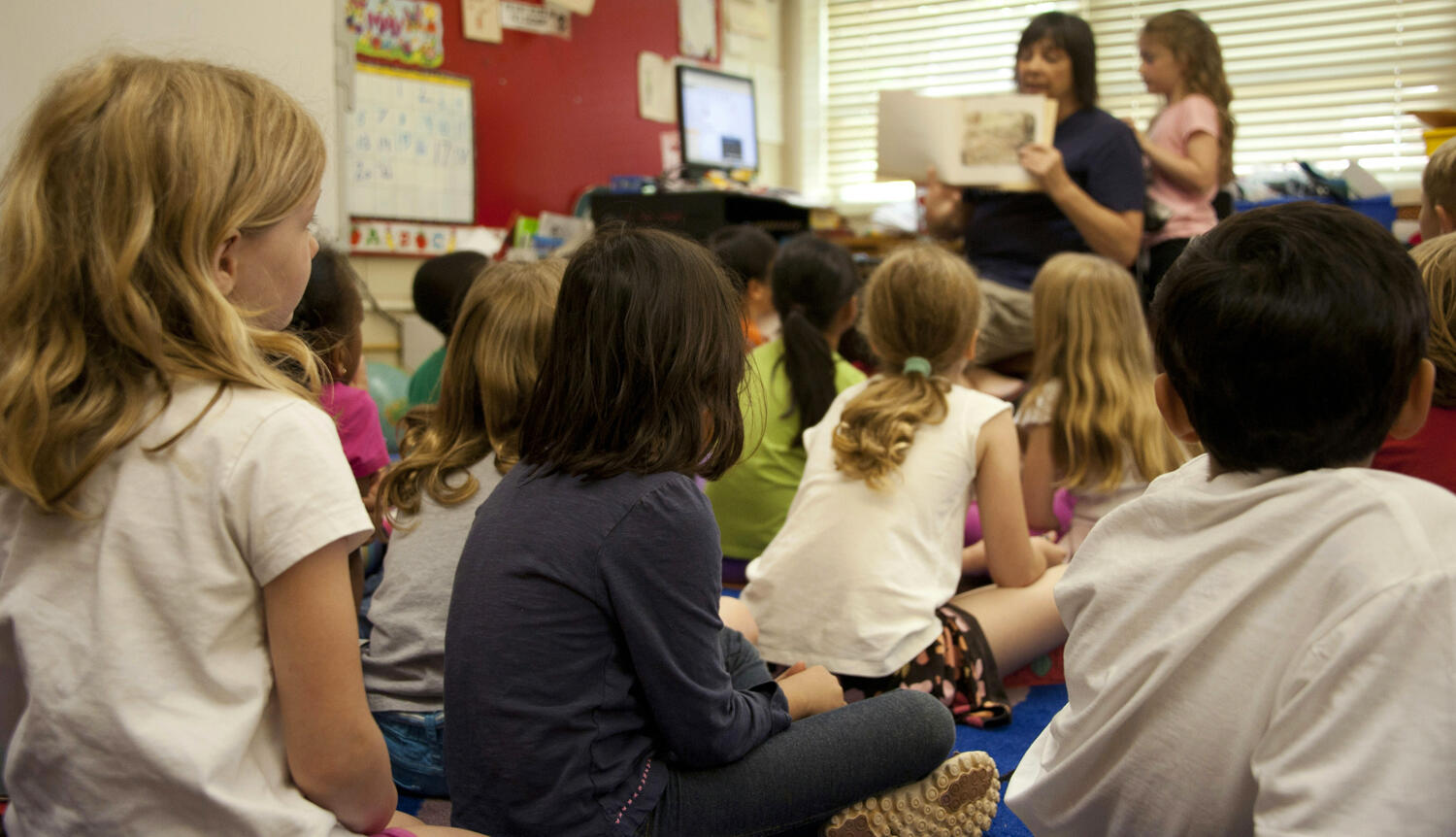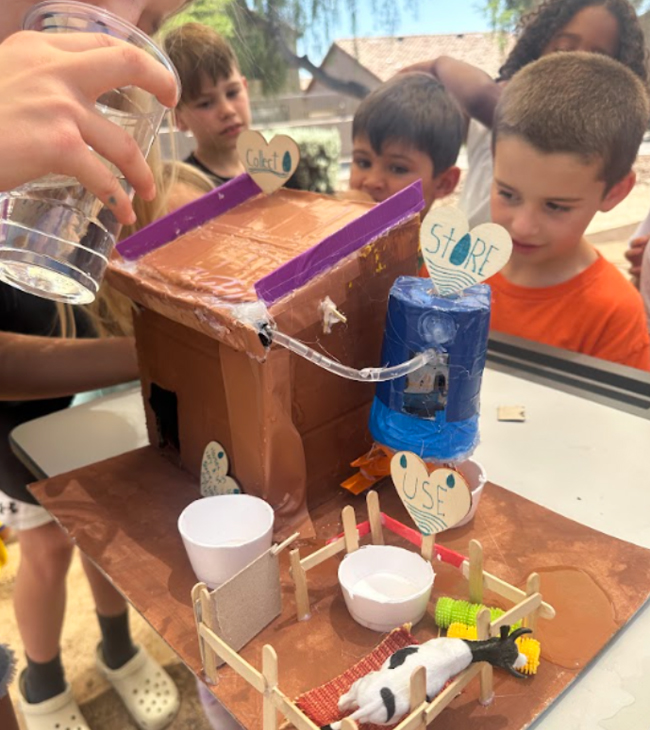
Water Literacy in the Desert: Aligning education with Arizona’s water future
Every drop of water holds immense value in Arizona, and the need for increasing water literacy continues to grow. The team behind Water Literacy in the Desert recognizes this urgency at its root: in K-12 education.
In collaboration with teachers, who will help lead the creation of water literacy curricula through compensated workshops, Water Literacy in the Desert aims to equip K-12 students with the tools necessary to understand and tackle water-related challenges. The project is supported by Impact Water - Arizona, a pillar of the Arizona Water Innovation Initiative.
“This water literacy project will increase awareness, knowledge and understanding of our water here in the desert,” says Amy Liu Flores, program manager at the Sustainability Teachers’ Academies. “I want students and their teachers to gain a deeper understanding of where our water comes from and how it is used.”
A collaborative approach between teachers and ASU researchers ensures that the curriculum will serve as an educational tool and resource that resonates with the experiences of teachers and students.
“Our main hope is that, as they grow, students will be able to address some of our most pressing water issues,” says Janna Goebel, assistant professor in the School of Sustainability and co-lead on the project. “We’re making sure that we’re acknowledging the experiences of the students now and equipping them with the literacy they need to be future leaders.”
Water Literacy in the Desert’s curriculum will encompass the 2018 Arizona Science Standards, as well as multiple standards across social studies, math and English language arts. By focusing on K-12 students, specifically those in 2nd/3rd, 8th and 11th grades, the team will support learners in developing a deeper understanding of the role that water plays in their lives, aligning with standards appropriate for the student’s grade level.
Per standards, 2nd-grade students may learn about the role of water in shaping the land and supporting life, while 8th-grade students may delve into the complexities of human consumption of limited resources. High school students, in turn, might build on this knowledge to explore the intricate relationships of Earth’s materials, surface processes and groundwater systems.
Overall, the curriculum will incorporate imagination and future thinking activities focused on water use in food production and urban tree cover, as well as how their schools utilize water resources. The goals the curriculum will emphasize include urgently addressing water challenges in Arizona through community awareness and involvement, utilizing education to foster knowledge and water stewardship and preparing students to find solutions in water through behavioral changes, policy action and innovation.

However, this project isn't just about meeting educational standards. Many teachers recognize that the most impactful forms of learning include place-based and interactive engagement.
“Sparking long-term engagement is key in this project,” says Marco Janssen, project co-lead and professor in the School of Sustainability, something he learned engaging youth in his water stewardship project, the Drylab Challenge.
To enhance ongoing youth engagement, the curriculum will be designed to connect students to their immediate environment and foster understanding of water challenges and solutions around the world. It will emphasize the interconnectedness of water systems, encouraging students to think critically about water use in their own lives and communities.
More specifically, the curriculum will focus on understanding and challenging systemic issues, as well as the need for accountability and collaboration on water solutions.
“This isn’t entirely about personal behaviors. We are really focusing on large-scale issues, like outdoor water use and who the main users of water are,” says Goebel. “It’s not meant to blame or shame individuals for their personal water consumption, but rather to help them understand how it all fits in a larger context.”
Central to the success of Water Literacy in the Desert is its partnership with the Sustainability Teachers’ Academies (STA). STA’s goal is to ensure a smooth co-design process as educators converge on curriculum goals, leveraging their previous work to create space for teachers to talk about sustainability in the classroom without overwhelming their busy schedules. STA is connected to a number of local schools, promoting inclusive collaboration.
“We are hoping that our contribution will not only be with the development of the curriculum,” says Flores, “but also something catered to what we see in classrooms today.”
The Water Literacy in the Desert team, educators and STA will work together to develop, implement and disseminate the curriculum. By incorporating already-established teaching plans, the team hopes to integrate sustainability knowledge into what students currently experience inside and outside of the classroom. The project will include teachers already working in the water education space, as well as teachers newer to water literacy efforts.
“I think it's important to not always just lead everything and say, ‘I am the holder of all this knowledge,’” says Flores, “but also to facilitate really incredible conversations with all of the expert educators.”
In addition, the STA partnership will aid in creating relevant and place-based curricula. The STA team already works closely with the Central Arizona Project, where they are currently launching a water education and conservation fellowship.
Flores adds, “our team’s continuous work in the water education space with partners like CAP, Watershed Management, AZ Project WET, EcoRise and ASU’s Impact Water - Arizona team keep us informed on the latest efforts.”

After curriculum development, the Water Literacy in the Desert project team plans to pilot it in Arizona schools, with a workshop scheduled to take place in January 2025 to gather feedback from participating teachers. The goal for the workshop is to refine the activities and ensure they are effective in increasing water literacy among students. And who better to help lead this workshop than a teacher?
Emily Núñez-Eddy, graduate research associate for Water Literacy in the Desert and former elementary school teacher in Phoenix public schools, will be championing the relationship with the pilot schools, working directly with educators in the classroom. Aided by her experience in curriculum design and addressing the learning needs of diverse students, Núñez-Eddy plans to help design lessons on water literacy that are exciting, impactful and full of "A-HA" moments for students.
“Early exposure to water literacy, whether at the elementary, middle school or high school level, helps students develop an awareness of environmental issues and their impact,” says Núñez-Eddy. “Educating young people about water issues is key to ensuring its sustainability.”
Looking forward, Water Literacy in the Desert plans to extend beyond Arizona and have the curriculum translated into different languages. Making the curriculum available online through the STA and Impact Water - Arizona websites will ensure that these resources have a lasting impact, reaching beyond the initial pilot schools and leading to future partnerships.
“My hope is that we’ll create engaging materials that will help motivate other communities beyond the Sonoran Desert and help them understand the beauty we have here,” Goebel shares. The team is determined to foster critical thinking about water systems, and most importantly, empower students to make a difference in their classrooms, homes, schools and communities.
In a world where water scarcity is a growing concern, Water Literacy in the Desert aims to be more than just an educational initiative for K-12 students. The team is hoping to inspire educators and the next generation to think critically, act responsibly and lead the way toward a brighter future.
As Flores passionately states, “The work we do is exciting. It’s hopeful. I want to instill in students this idea that while, yes, we are in a crisis, we can handle this.”
About the author: Lara Van Lith is a graduate research assistant at Impact Water - Arizona. She is currently pursuing a Masters of Public Administration where she focuses on environmental and education policy and nonprofit leadership. Listen to her latest podcast series on sustainable storytelling to learn more!